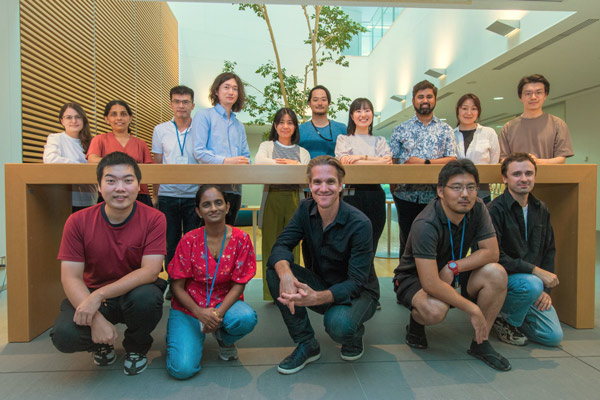Aug. 7, 2023 Research Highlight Biology
How places where negative experiences occurred stand out in our memories
The mechanism by which places associated with negative experiences are burned into our memories has been revealed
Three RIKEN neuroscientists have found that rats reinforce the memories of negative experiences in familiar locations by preferentially replaying them over in their minds1. This finding could have implications for treating conditions in people such as post-traumatic stress disorder (PTSD).
When an animal explores a new place, it generates a mental map of the area, which it can later recall. This mental map is created by special neurons known as place cells, which reside in the hippocampus. Different place cells fire as the animal moves around the area, but when it returns to a spot it has visited before, the same place cell fires again.
This mapping mechanism is well understood now, but it wasn’t clear how animals incorporate memories of things that happen to them while revisiting a previously mapped-out location.
Significant events get burned in our memories along with the place where they happened, whereas we tend to forget about details that don’t matter.
“For example, if you’re hiking along a familiar trail, you’re probably not going to remember all the details of the trail,” says Joshua Johansen of the RIKEN Center for Brain Science. “But if a bear comes out and attacks you, you’re going to remember a lot of the details about the bear and also the surrounding environment. We want to understand how these more complex memories are formed.

Figure 1: Suddenly encountering a bear while walking in a forest would imprint both the bear and the location in the walker’s memory. RIKEN researchers have discovered how this information is integrated into pre-existing mental maps in rats. © Christopher Kimmel/Moment Open/Getty
Now, Johansen, along with Jake Ormond and Simon Serka, has found that the neurons where negative experiences are stored are separate but adjacent to the place cells in the hippocampus and that the memories are reinforced by replaying the experience.
Specifically, the team found that a specific population of place cells ‘remapped’, changing their firing location to reflect the aversive experience, while other place cells did not change their firing location during learning, providing a stable representation of the physical environment. Notably, the cells associated with the negative experience were preferentially reactivated during rest periods between trials.
This finding could inform the development of new treatments for psychiatric disorders such as PTSD. “We’ve made much headway in understanding how simple forms of learning such as fear conditioning occur,” notes Johansen. “But that hasn’t really brought us that much closer to being able to treat conditions such as PTSD.”
This might be because we lack a good understanding of the higher-order processing systems in the brain that are altered in PTSD, Johansen thinks. “Understanding how higher-order systems such as the hippocampus alter the record of unpleasant experiences could give basic insights into how these systems are altered and dysregulated in conditions such as PTSD,” he says.

A team led by Joshua Johansen (third from left in first row) has found that enhanced reactivation of remapping place cells occurs during aversive learning. © 2023 RIKEN
Related contents
- Temporal representation in the hippocampus scales with duration
- How left and right hippocampal CA1 regions in the mouse brain talk with each other
Rate this article
Reference
- 1. Ormond, J., Serka, S. A. & Johansen, J. P. Enhanced reactivation of remapping place cells during aversive learning. Journal of Neuroscience 43, 2153–2167 (2023). doi: 10.1523/jneurosci.1450-22.2022
